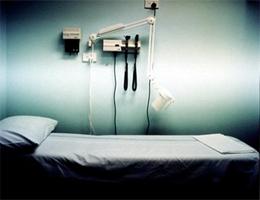2009 in Healthcare

Health was usurped by the economy as the story of the year in 2009, yet health stories persistently hit the headlines. If you look at the papers on the 29th and 30th December 2009, reading the stories is like ground hog day: crowded A&Es, excessive wait times for colonoscopies, barbaric conditions in psychiatric hospitals. But look if we objectively over the year what were new health stories. The two biggest health stories were – the flu pandemic and President Obama’s efforts to extend health care coverage in USA. And of course the new consultants’ contract…
Flu came out of the nowhere, from Mexico in March. The first Irish case was confirmed in April 2009, yet it has turned out much less deadly than expected.
Originally, the Department of Health predicted a quarter of the population would be infected, but this has not materialised.
Infection rates peaked in November but could to hit early winter highs again and if they do at the level first expected then it will have huge impact on health system.
Swine Flu is an unusual virus; flu usually hits older people whereas this flu – H1N1-hits younger people, particularly under fives and those with underlying medical conditions. So far, there have been 22 deaths in Ireland and 15 in Northern Ireland. There was some confusion initially over the vaccination programme. But overall, the Department of Health and Health Services Executive (HSE) have managed their public awareness and vaccination campaign.
They are currently vaccinating children under five.
The most significant health milestone in 2009 has to be the consultants contract.
The new contract came into effect this year after five years of negotiation. Under the new contract, consultants work longer hours (37 as opposed to 33 hours), a longer working day (7-7), they have to report to a clinical director, work as part of a team, and most significantly for public patients, consultants must operate a common waiting list for diagnostics and adhere to the ratio agreed of public and private mix (in most cases consultants must not exceed 20% private work in the public system).
According to Minister Harney, who has overseen the negotiation, this common waiting list will ensure that cases like Susie Long's will not happen again, and that there is an even playing field for public and private patients.
However, today’s paper reports that 218 patients are waiting over one month for an urgent colonoscopy despite Minister Harney’s promise in April that no patient would wait more than a month for the procedure. Figures are higher now than they were in June. So can we really see the benefits of the new contract?
In some respects yes, consultants are now working longer hours and days, and as part of a team. The clinical directors are in place which is central to progress and change in the health system.
However, aspects such as the common waiting list for diagnosis just have not materialised in all areas, or if they have we have yet to see the results.
Today’s report shows 17 out of 35 hospitals are not meeting the one month wait time for urgent cases. Also, HSE figures released in October showed that only 2 out of 50 hospitals were consultants keeping their contractual agreement of the 80/20 public private mix.
These figures show that private patients are still privileged over public patients within the public hospital system.The consultants’ contract was a missed opportunity to create an even playing field for public patients.`
Other real achievements in the year gone include the transfer of breast cancer care from 35 to eight hospitals. That along with the leadership of Tom Keane in cancer care are real achievements. There is still progress to be made in cancer care but it is moving in the right direction with breast cancer care leading the way.
The HSE marks its fifth anniversary on 1 January 2010. It has managed to do more with less. Brendan Drumm has long been a champion of transferring of care from hospital to the community, from inpatient to day cases. This is happening, and at the same time the HSE providing more care, with fewer staff & less money and 1600 fewer beds. Also, controversially, hospital services are being reconfigured, such as the removal of A&E from Ennis, Nenagh and Monaghan hospitals.
Developments in the community are happening, but not at the speed or at the level that is required. A few months ago, I looked at child and adolescent mental health services. The headline figures that were being propagated by the HSE stated that there were 55 teams up and running. However, when you looked at the detail of it, these teams may exist but virtually all of them were under staffed and nothing like the 13 person multi disciplinary team that was promised. The same shortcomings present themselves in Primary Care Teams (PCT); there are 145 PCTS as opposed to the target of 210. And they are not staffed and resourced as promised because of staff embargoes and restricted budgets, not developed as extensively as promised.
November 16th 2009 saw the first all out strike in the health system in a long time. This resulted in delayed procedures for 16,000 patients. It is measures such as the staff moratorium, non-replacement of contract staff and declining budgets that are resulting in the incidents like ward closures in Crumlin, the orthopaedic surgeon unable to operate in Letterkenny, postponed surgery for children with scoliosis, and the reduction in home help hours. This has combined with the very inclement industrial relations atmosphere, and can only hurt patient care more in 2010.
